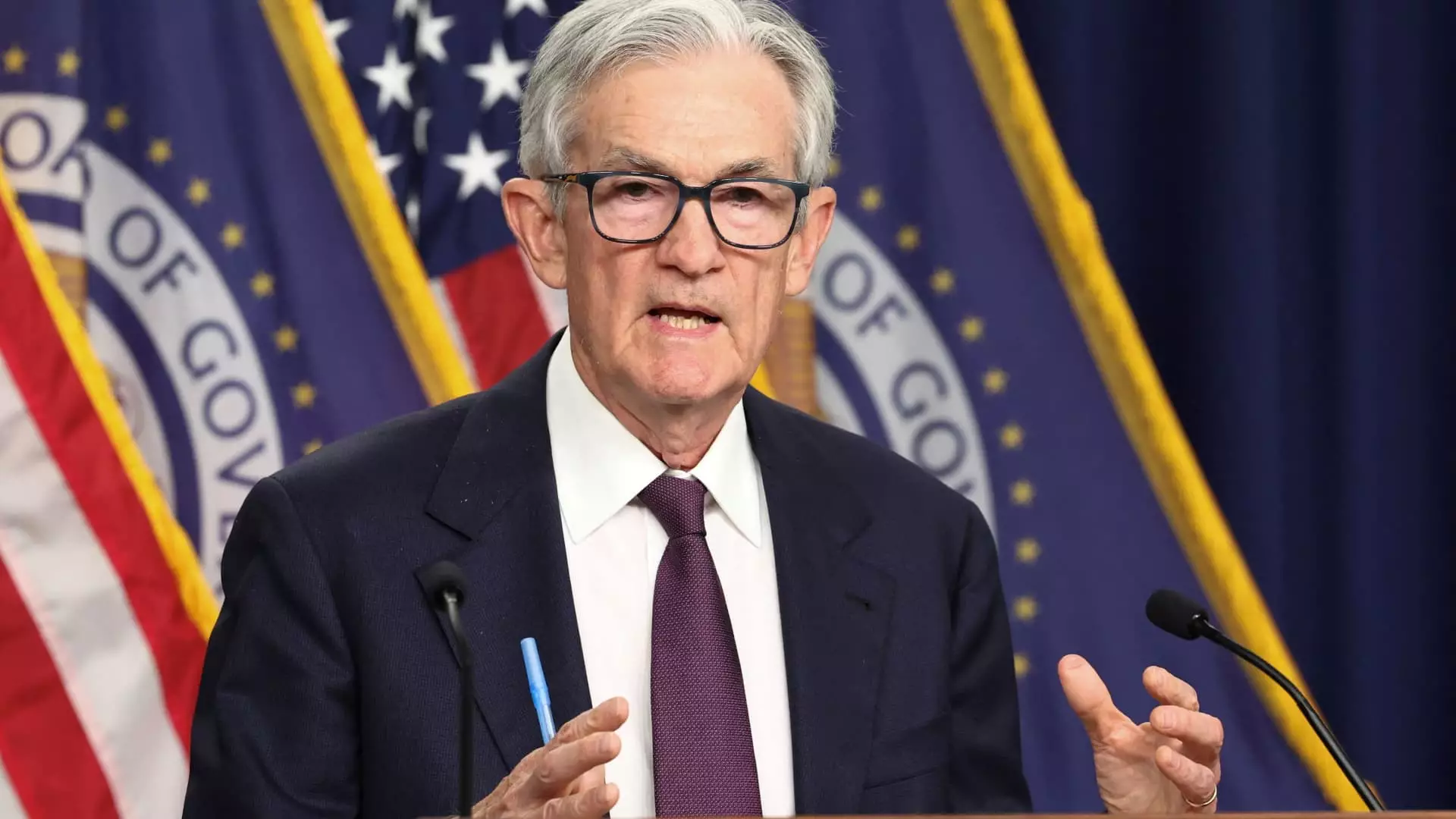In the annals of economic policy, the Federal Reserve (Fed) often stands at a crossroads where it must choose between acting decisively or waiting for more data. This dilemma isn’t new; seasoned economists could recount how figures like Arthur Burns, Alan Greenspan, and Ben Bernanke fell into the trap of systematic hesitation. Their legacy is painted with misjudgments that, in hindsight, critics label as “too late.” So, as Jerome Powell finds himself at the helm of the Fed today, one can’t help but question whether he will follow in their footsteps. It begs the question: how many more opportunities must the Fed squander before realizing that decisive action is essential in an ever-volatile landscape?
What stands out in historical analyses is the Fed’s proclivity to react rather than anticipate. With Powell now in a precarious position — where both inflation and employment teeter on a knife-edge — the pressure mounts. The quandary is compounded by a 21st-century context filled with unique challenges, from tech-induced disruptions to political whims influencing economic policy. The looming concept of being “too late” could very well become synonymous with Powell’s term if decisive actions aren’t taken soon.
The Danger of Indecision
Jerome Powell’s current hesitancy to lower interest rates, despite significant market fluctuations, raises alarming questions. Economists like Dan North argue that historically, the Fed is notorious for adopting a “wait and see” stance, often to the detriment of the economy. As data pours in and public sentiment shifts, Powell has opted for inaction. Strikingly, this reticence to act in the present climate stands contrary to the bold moves made by past administrations during times of crisis, often resulting in unintended consequences.
Having the luxury of waiting may feel prudent, but in an economic environment fraught with uncertainty amplified by geopolitical tensions and internal pressures, indecision could lead to irrevocable fallout. The fallout could unleash a tailspin in markets, affecting everything from consumer confidence to job stability. It cultivates a dangerous narrative: that reassurance in a “solid” economy may be nothing more than a façade, one that can crumble under sudden shifts in sentiment.
Trump’s Criticism: A Double-Edged Sword
Notably, former President Donald Trump has been vocal in his condemnation of Powell, dubbing him “Too Late.” While one might dismiss this as partisan bickering, it illustrates a wider recognition of Powell’s indecisiveness. In Trump’s worldview, the Fed’s erratic inflation responses suggest mismanagement and incompetence—a sentiment echoed by numerous commentators who advocate for an aggressive stance on interest rates to counteract rising inflation rates that currently linger below a manageable threshold.
Trump’s assertion of “virtually no inflation” might hold water if viewed through a narrow lens, but it glosses over more complex dynamics at play. The truth is that tariffs, such as those initiated by the Trump administration, have only begun exerting their influence on the economy. Caution is warranted when claiming economic stability. It raises the question of whether Powell should start listening to the cautious optimists or succumb to the fiscal inertia that leans heavily on past precedents.
The Illusion of Economic Certainty
In a market where nearly 90% of S&P 500 companies have expressed concern regarding tariffs, the discrepancies between public sentiment and economic data signal looming disruptions. Powell’s unwavering confidence in both the economy and the labor market appears, at best, misguided. The prevailing adage that “the labor market is the last to know” rings true; observing job losses only after they manifest is hardly a strategic approach for a central bank. Simply put, if the Fed waits for labor indicators to signal a downturn, it may be staring into a void it helped create.
Moreover, the differentiation between a “strong” labor market and the reality of recession indicators blurs the lines of successful economic forecasting. Here lies Powell’s critical challenge: determining when to act decisively, thereby preventing any potential global economic repercussions.
If history has taught us anything, it’s that the Federal Reserve’s efforts to balance employment and inflation are akin to walking a tightrope. As Jerome Powell contemplates the intricacies of policy-making in an unpredictable landscape, it’s imperative that he avoids the missteps of his predecessors. The stakes are high; becoming the latest Fed Chair to be labeled “too late” is not merely an issue of timing but rather a reflection of broader implications that stretch across the economic horizon. To ensure the stability and growth we all seek, Powell must navigate thoughtfully yet assertively, lest today’s concerns transform into tomorrow’s catastrophic failures.

